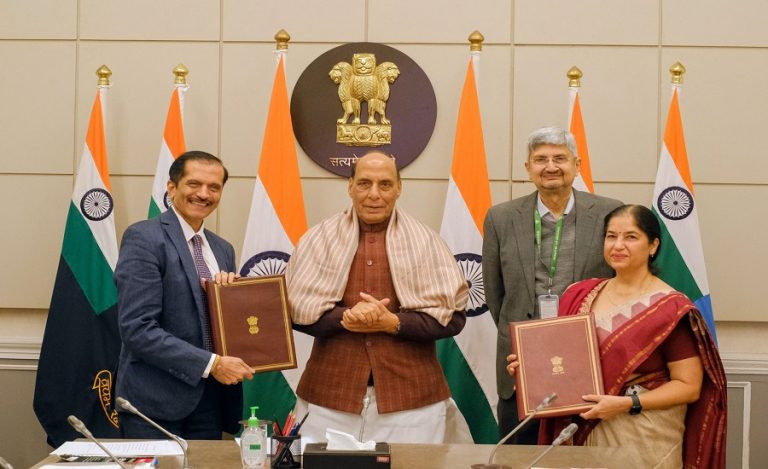New Delhi: In a written reply in the Lok Sabha, Union Minister of State for Environment, Forest and Climate Change, Kirti Vardhan Singh, outlined India’s expansive strategy to tackle climate change, conserve biodiversity, and address human-wildlife conflicts. This includes significant progress under the National Action Plan on Climate Change (NAPCC), as well as targeted efforts for tiger and elephant conservation, ecosystem protection, and climate resilience.
Climate Change: India’s Multilayered Response
The Government has implemented wide-ranging policy measures to promote adaptation, build resilience, and provide social protection in climate-sensitive zones such as flood-prone, coastal, and drought-affected regions.
Under the National Action Plan on Climate Change (NAPCC), various missions are operational:
National Mission on Sustainable Habitat (NMSH): Focuses on building climate-resilient cities and strengthening recovery capabilities from climate-related disasters.
National Mission for Sustainable Agriculture (NMSA): Promotes micro-irrigation (Per Drop More Crop), Integrated Farming Systems (IFS), and climate-adaptive techniques to support Indian farmers.
State-Level Action Plans on Climate Change (SAPCCs)
To decentralize climate strategies, 34 States and Union Territories have prepared or updated their State Action Plans on Climate Change (SAPCCs). These plans align with the NAPCC and focus on state-specific climate vulnerabilities, cross-sectoral adaptation, and climate-resilient infrastructure.
Biodiversity Conservation: Community and Science-Driven Approach
The government has enhanced conservation of critical ecological zones like the Western Ghats, Himalayas, and North-East region, supported by institutions such as:
- National Biodiversity Authority (NBA)
- State Biodiversity Boards
- Union Territory Biodiversity Councils
As part of the updated National Biodiversity Strategy and Action Plan (NBSAP), aligned with the Kunming-Montreal Global Biodiversity Framework (KMGBF), India has adopted 23 National Biodiversity Targets (NBTs) and 142 indicators, focusing on sustainable use, benefit sharing, ecosystem restoration, and inclusive governance.
Protection of Eco-Sensitive and Biodiversity-Rich Areas
To safeguard ecological balance, the Ministry has notified 120 Eco-Sensitive Zones (ESZs) around protected areas and biodiversity hotspots. These zones serve as buffers or “shock absorbers” to National Parks and Wildlife Sanctuaries and include areas such as:
- Mahabaleshwar-Panchgani
- Bhagirathi Valley
- Matheran
- Dahanu Taluka
- Western Ghats, North-East, and the Himalayas
India currently has 18 Biosphere Reserves, of which 12 are listed under UNESCO’s World Network of Biosphere Reserves.
Wildlife Conservation: Tiger and Elephant Protection
Tigers
As per the All India Tiger Estimation 2022, India’s tiger population has increased to 3,682, up from 2,967 in 2018 and 2,226 in 2014. The country has 58 notified tiger reserves, covering 2.5% of India’s geographical area.
Through the National Tiger Conservation Authority (NTCA), a three-pronged strategy is being implemented to reduce human-wildlife conflict, including:
- Material and logistical support
- Restricting habitat intervention
- SOPs for conflict mitigation and tiger rehabilitation
Elephants
The Project Elephant, launched in 1992, supports habitat protection, elephant corridors, and conflict mitigation. As per the 2017 estimation, India’s elephant population stands at 29,964. There are 33 Elephant Reserves across 14 states.
To further reduce human-elephant conflict (HEC), the Ministry issued:
- Guidelines for Harmonious Coexistence (2023)
- Field Manual for Frontline Staff (2022)
States are encouraged to engage with local communities, raise awareness, and implement early-warning systems.
Conservation Funding and Legal Backing
Financial and technical assistance is extended to States/UTs under the Centrally Sponsored Scheme – Project Tiger & Elephant (CSS-PT&E). Conservation activities are also backed by:
- The Wild Life (Protection) Act, 1972
- The Biological Diversity Act, 2002
- The Environment (Protection) Act, 1986
These acts allow for the creation of National Parks, Wildlife Sanctuaries, Conservation Reserves, and Community Reserves, along with ESZs and BRs.
Conclusion: A Whole-of-Government, Whole-of-Society Approach
India’s climate and biodiversity strategies reflect a holistic and inclusive model of environmental governance. Through multi-mission frameworks, state-level alignment, community engagement, and international cooperation, the government is working toward a sustainable, resilient, and ecologically secure future.



























